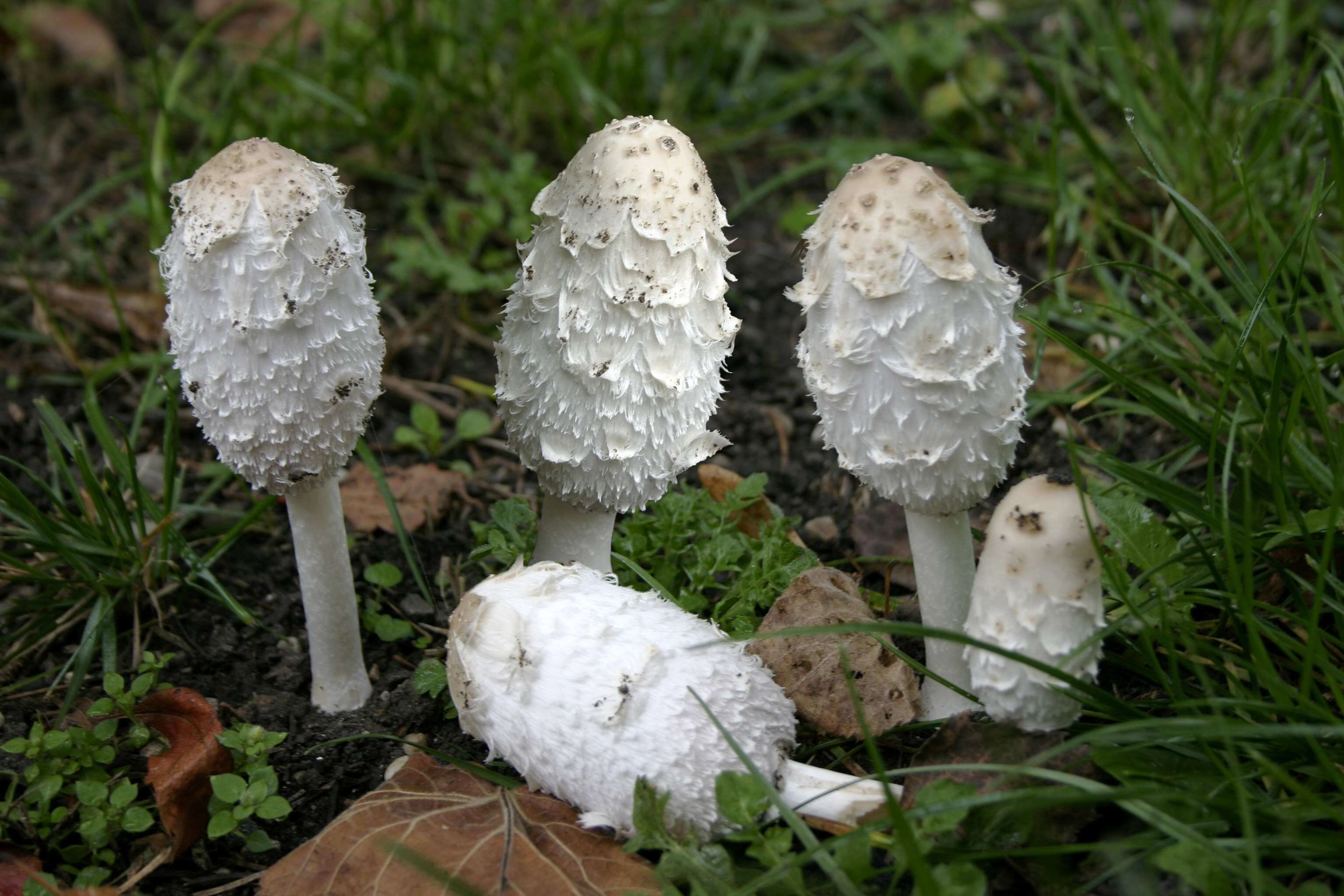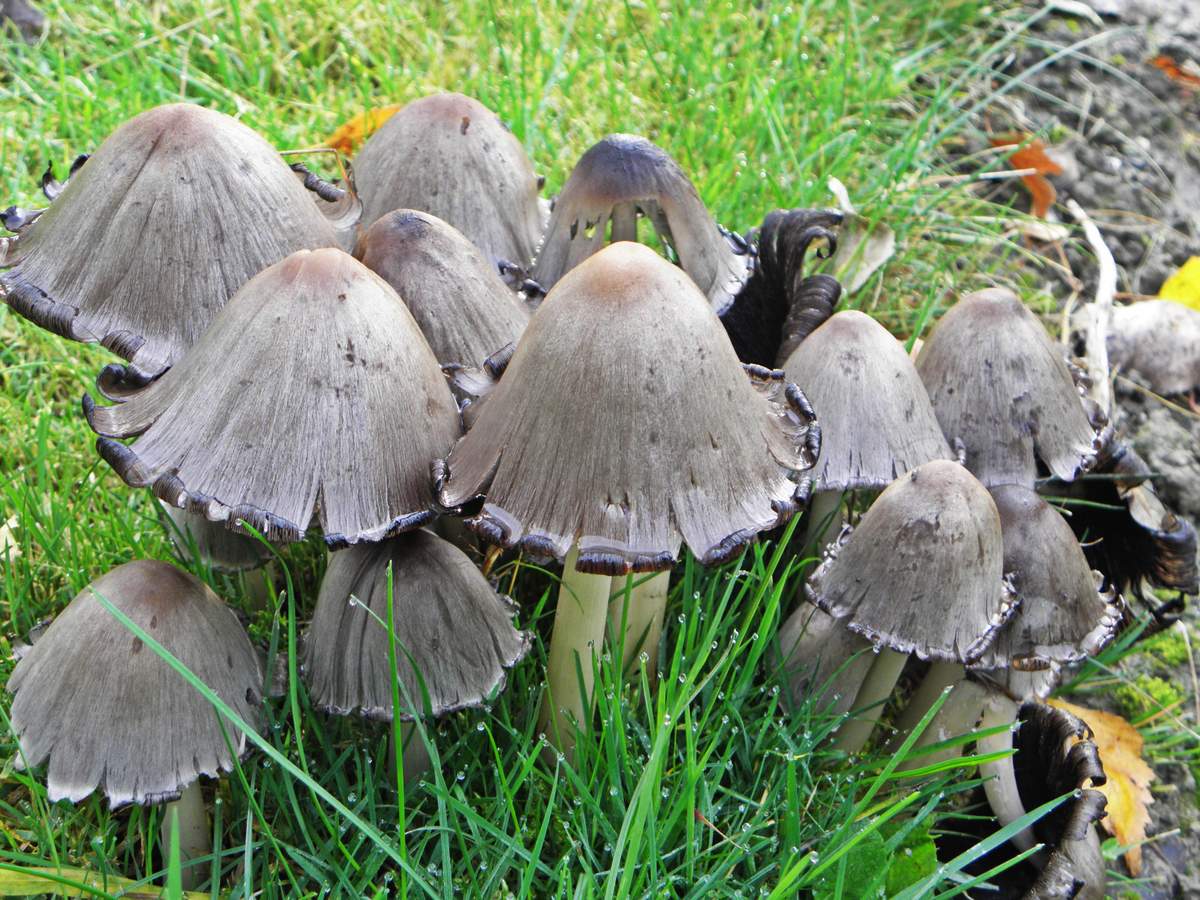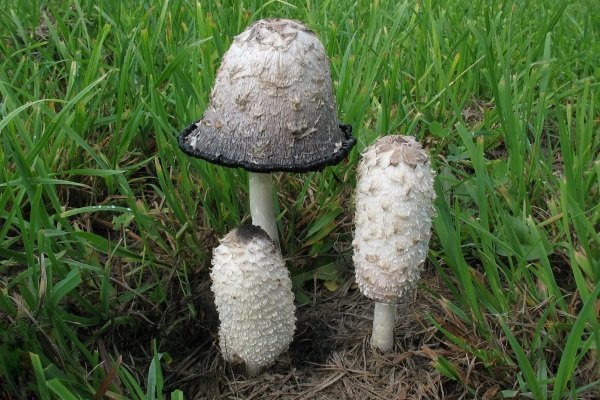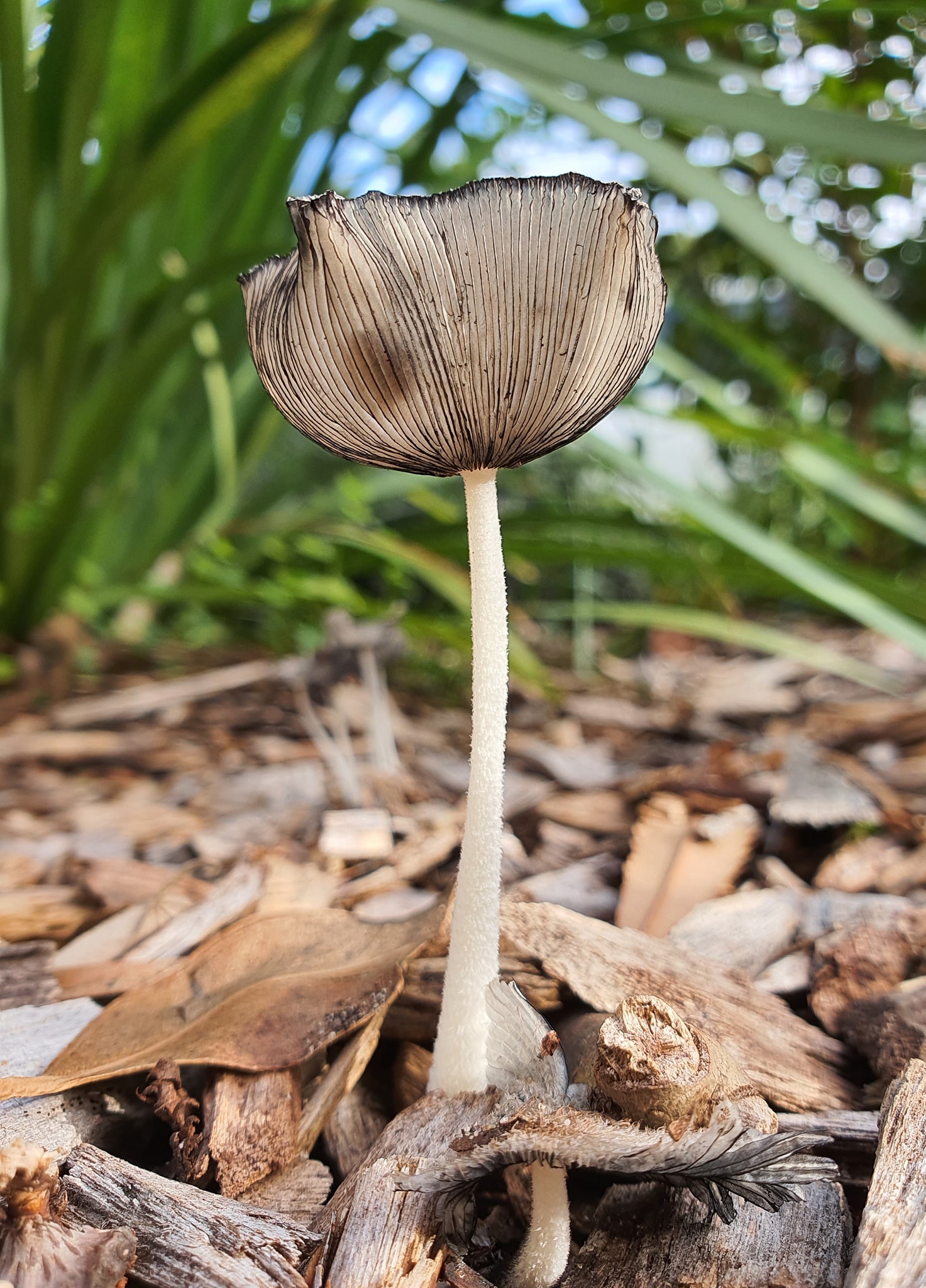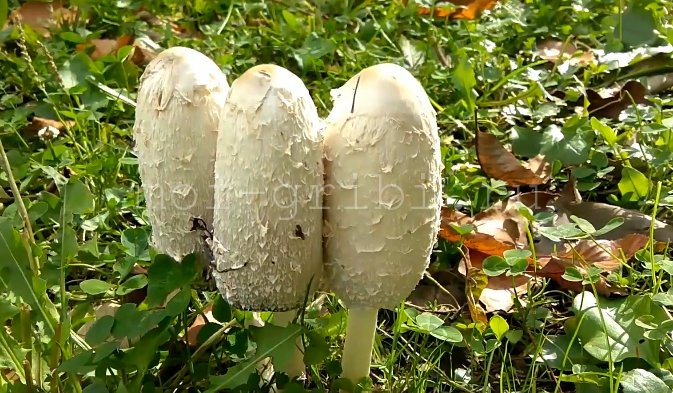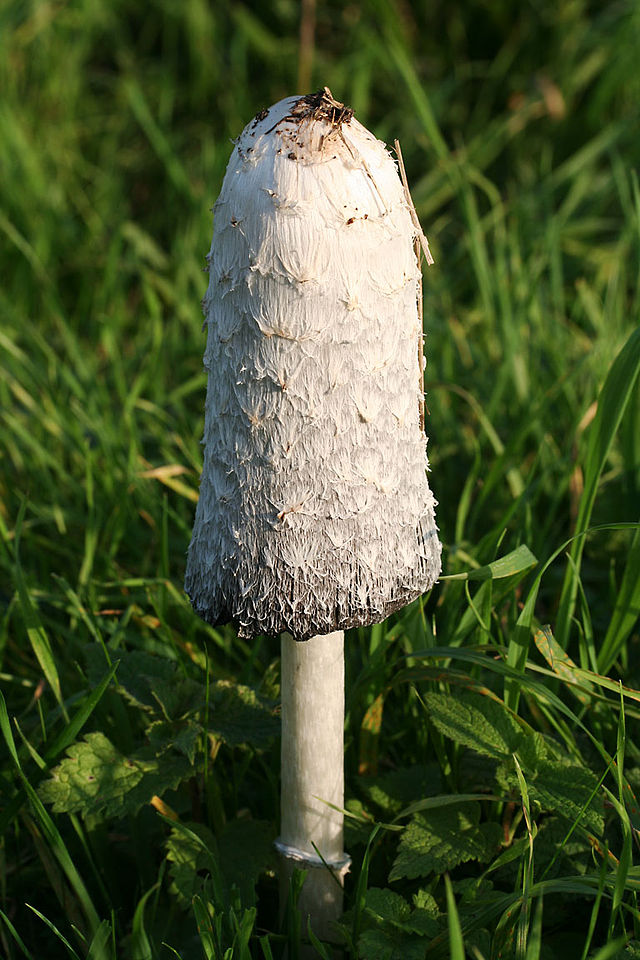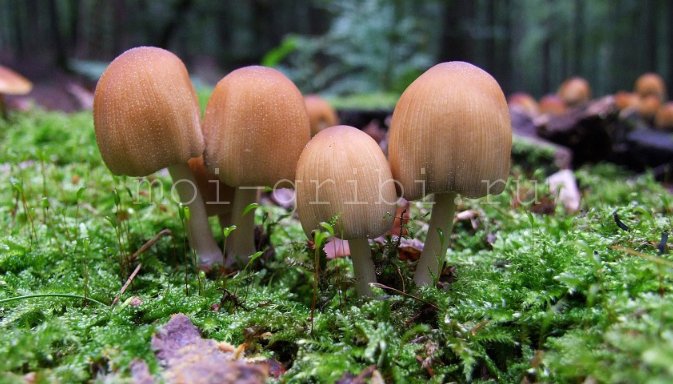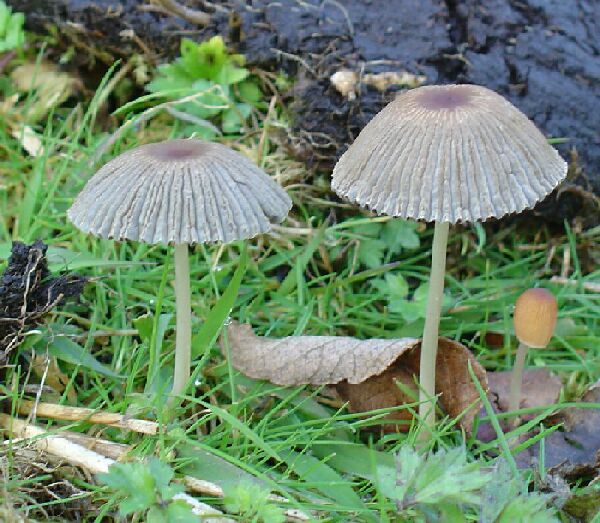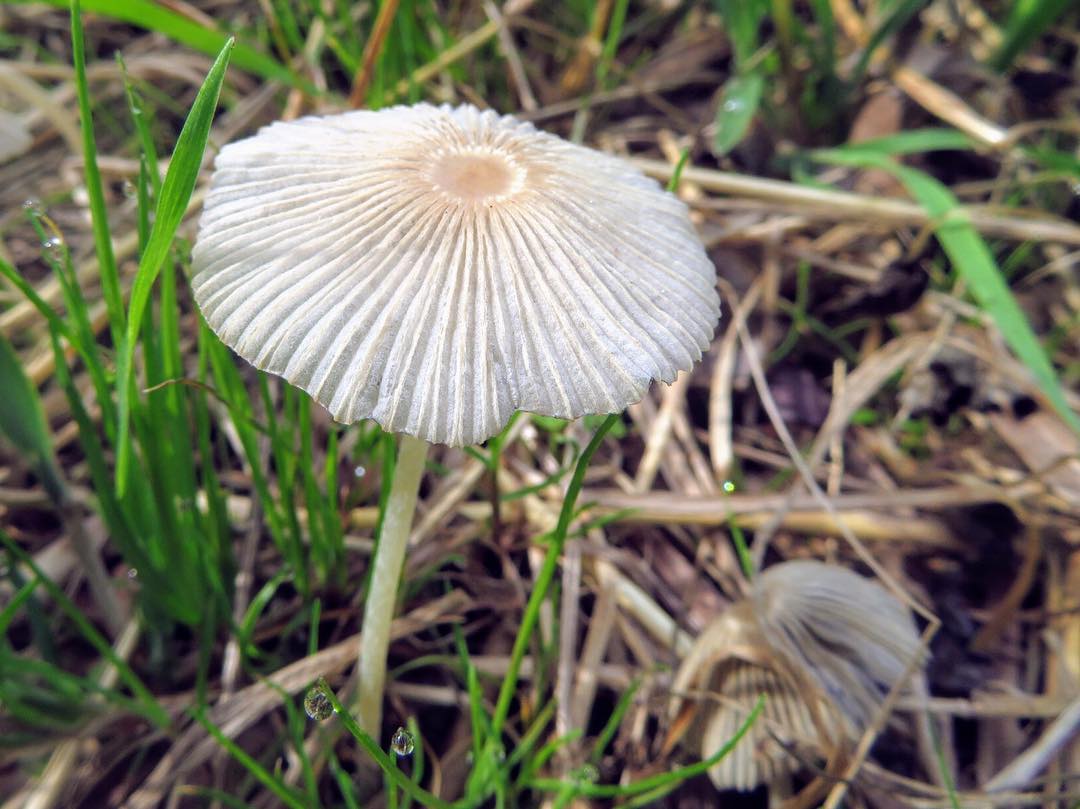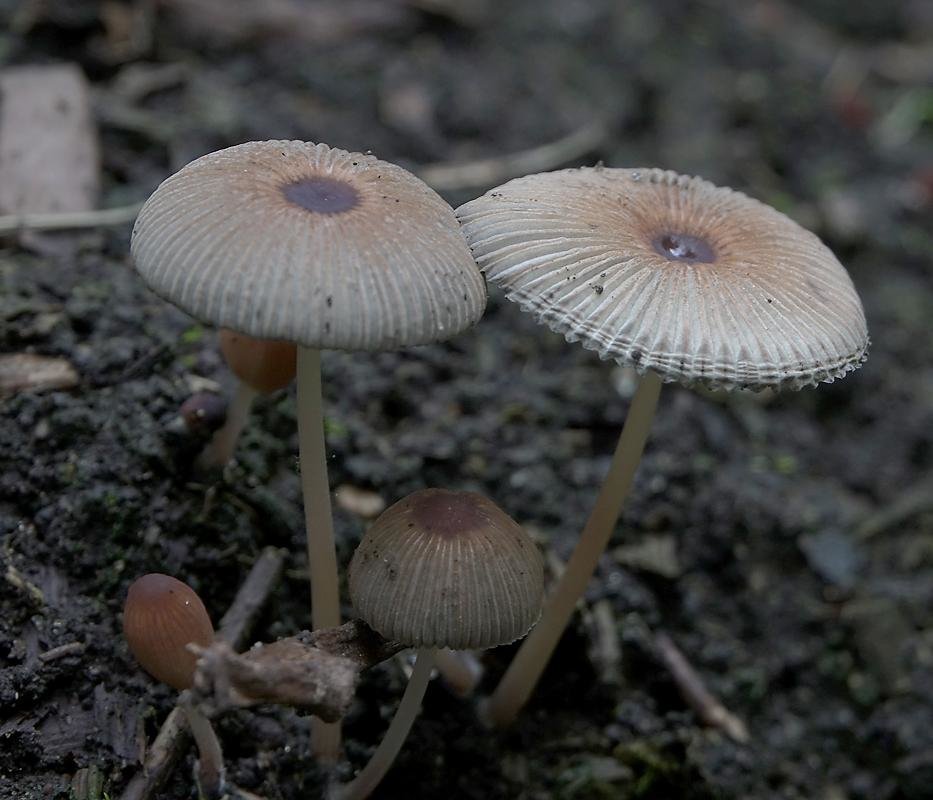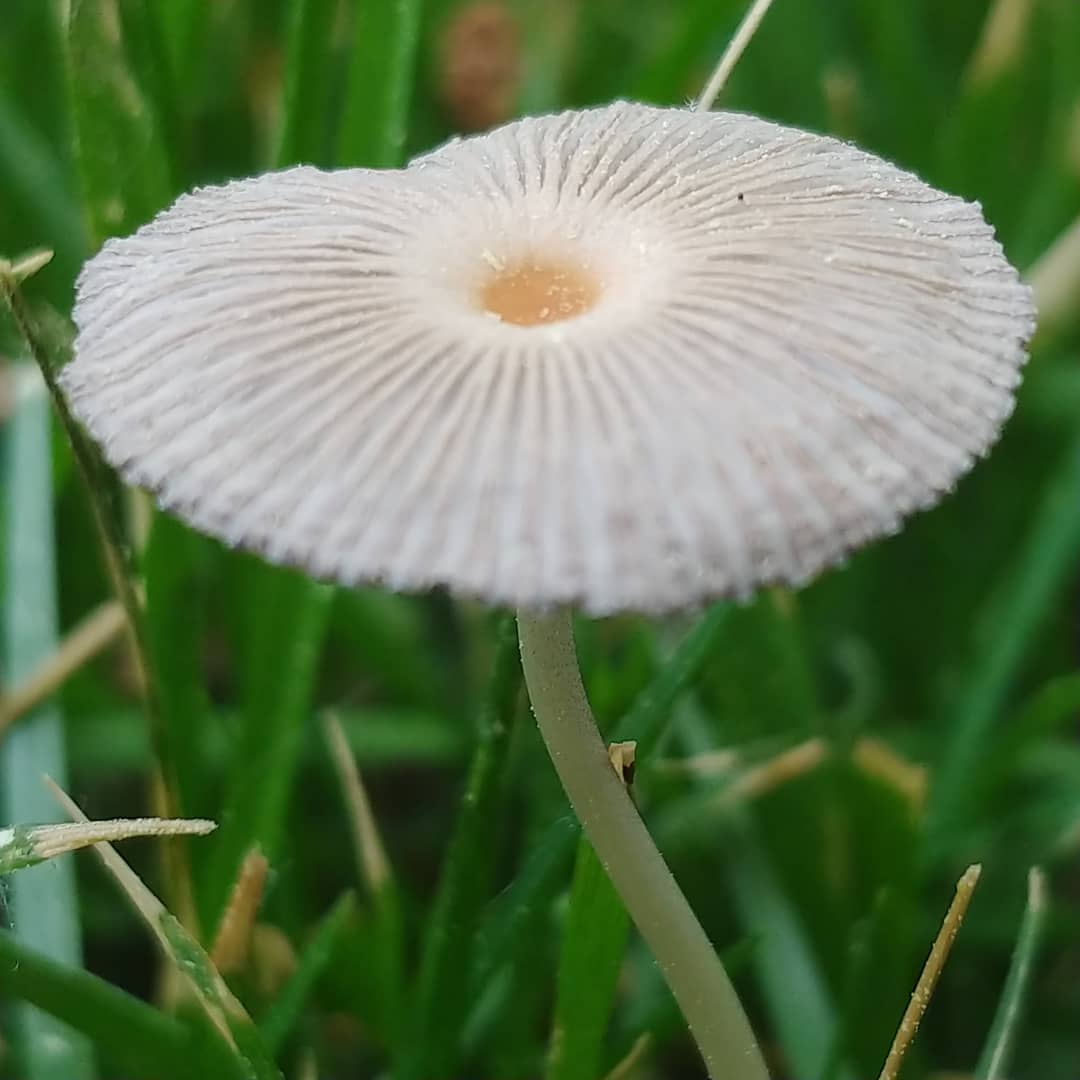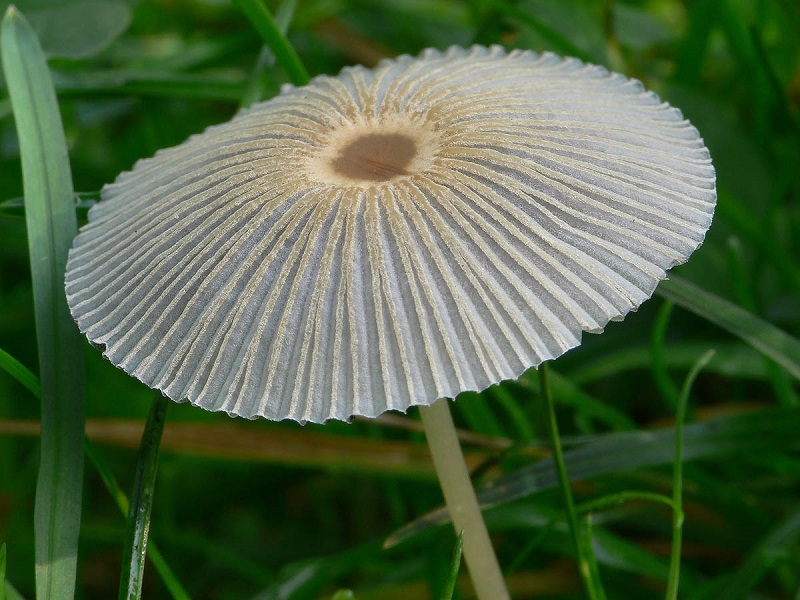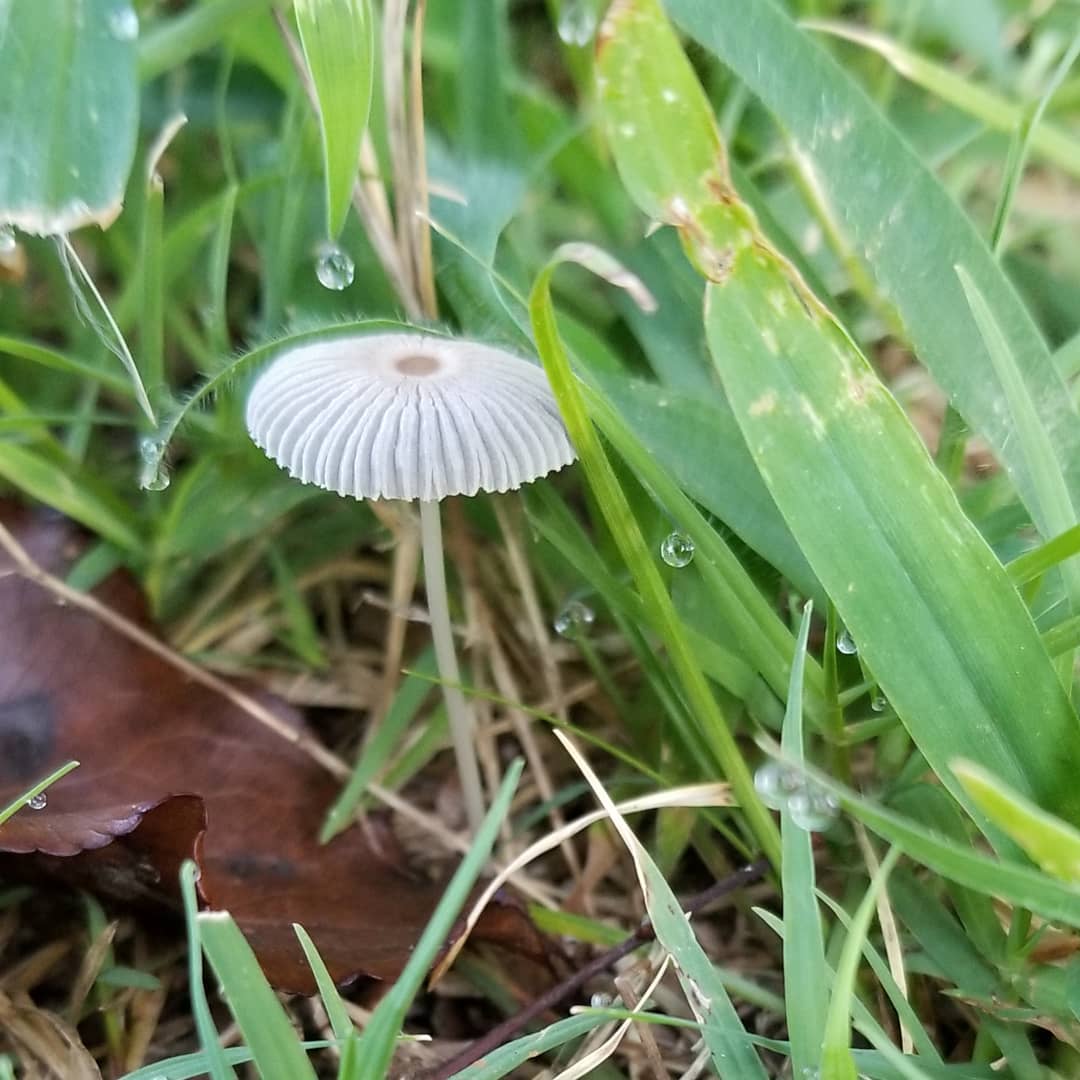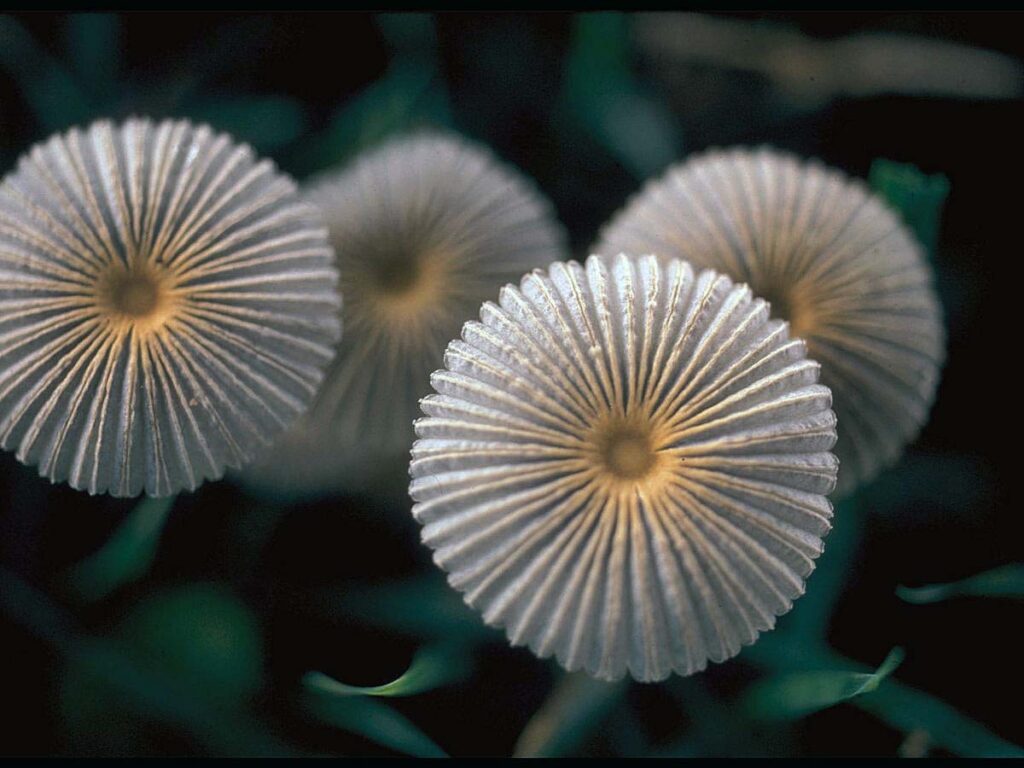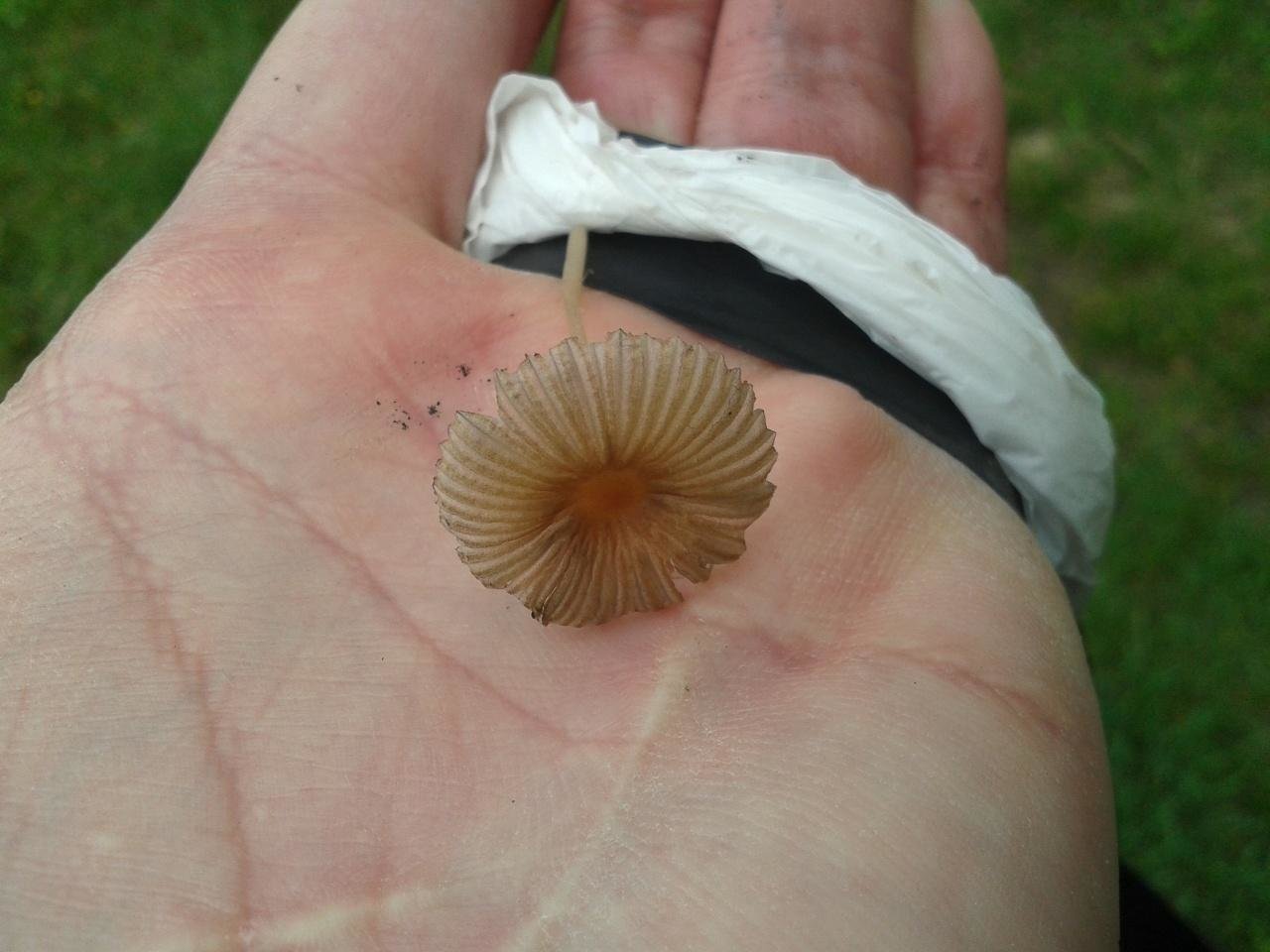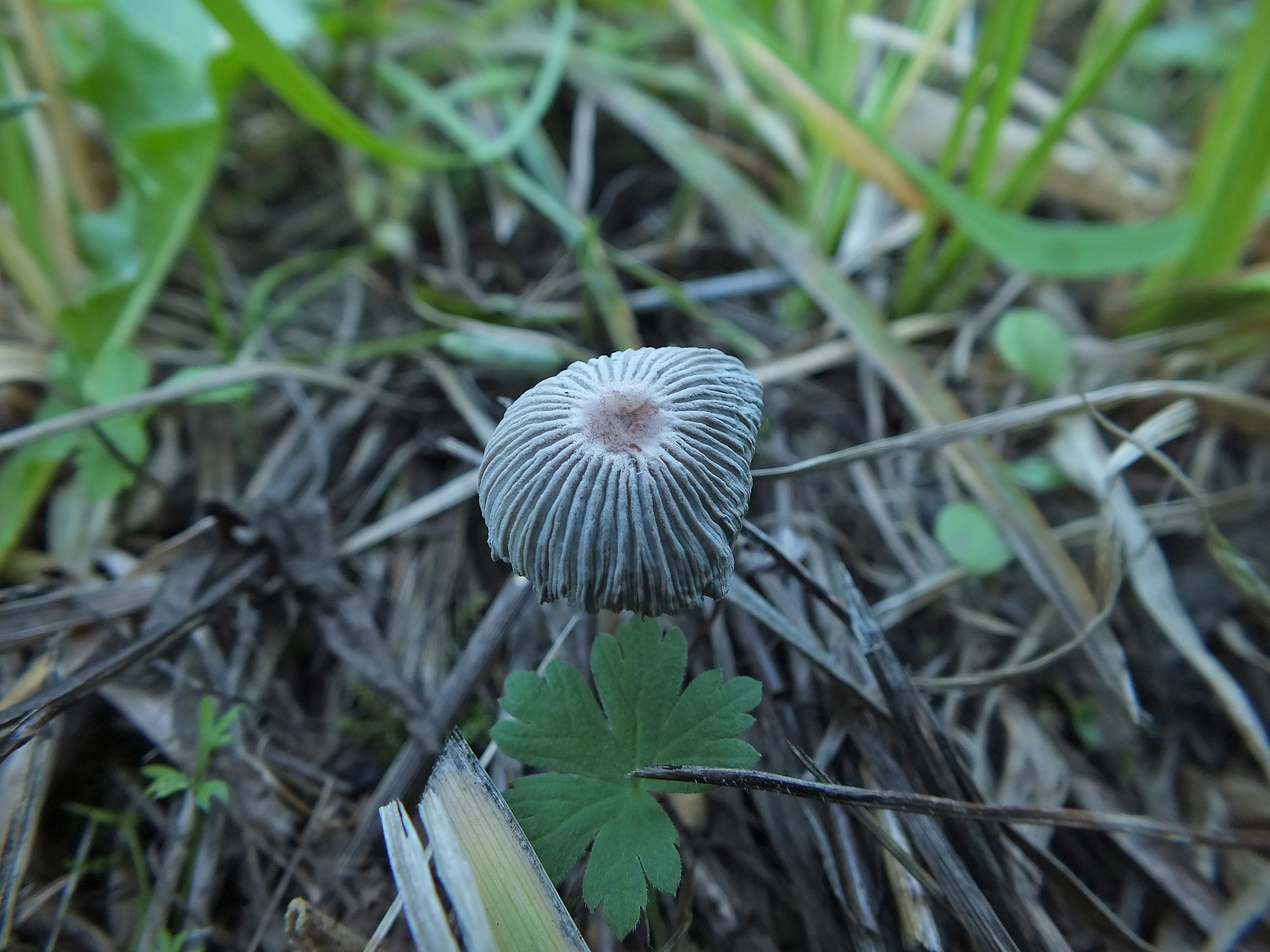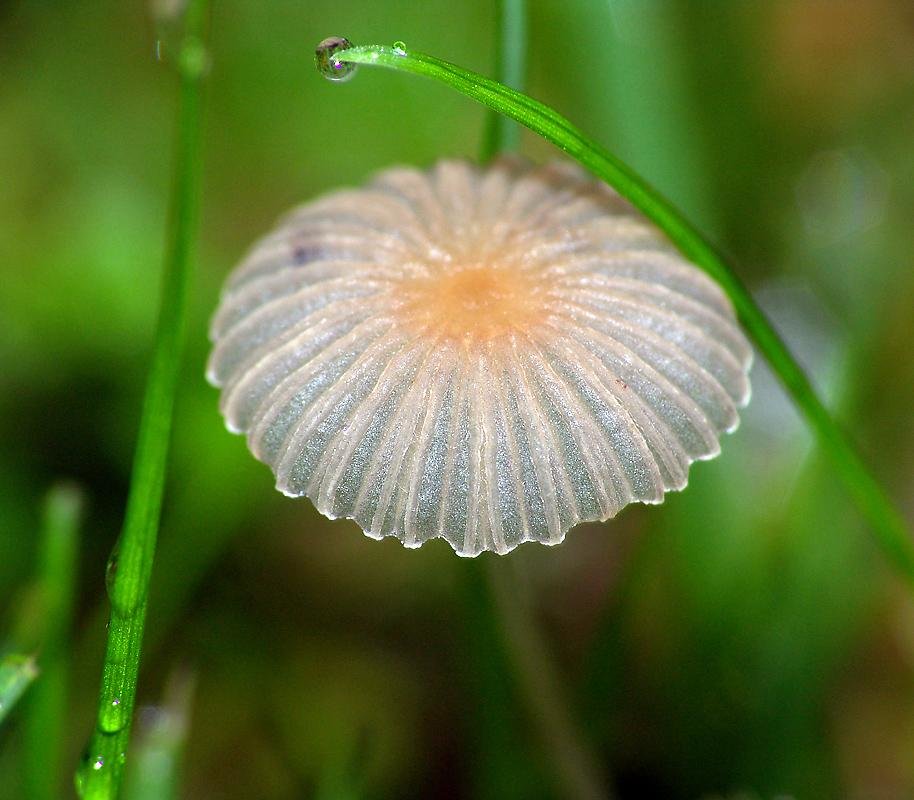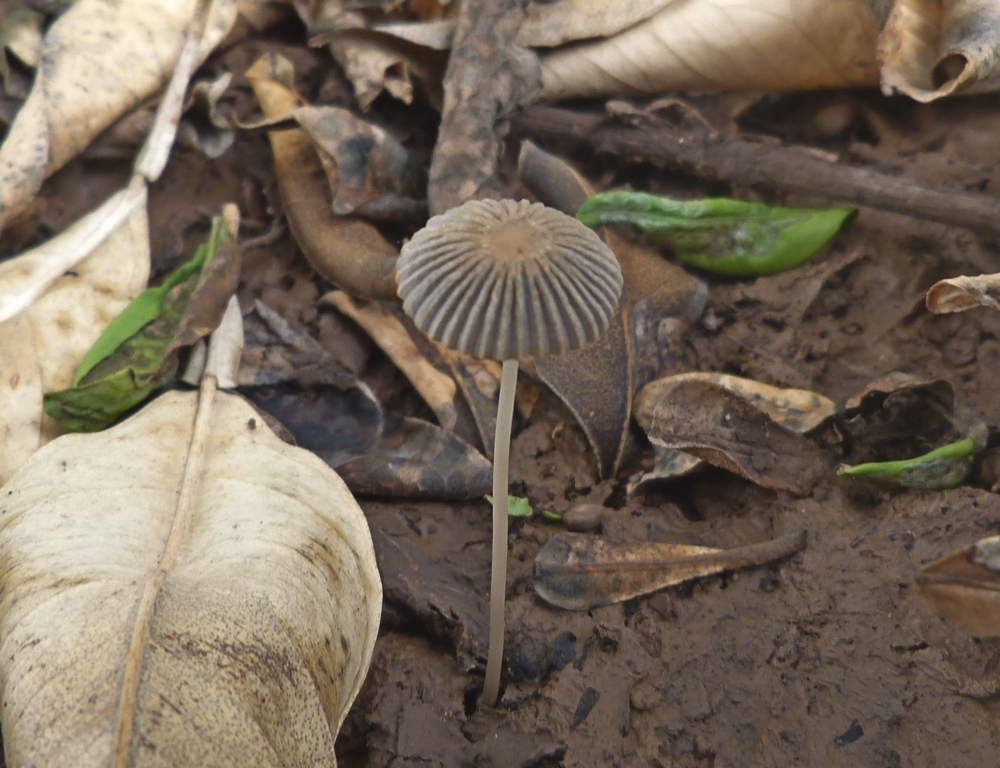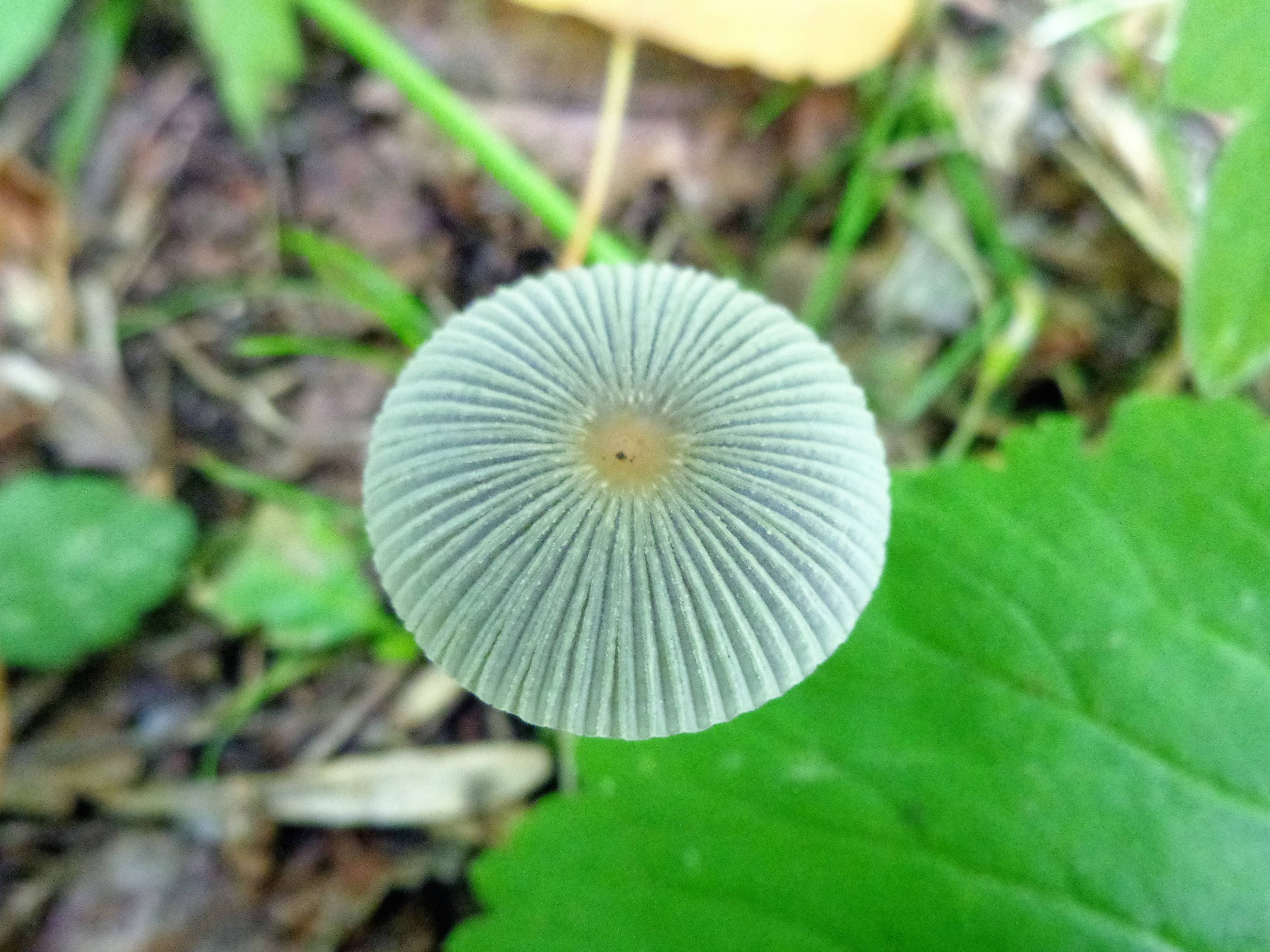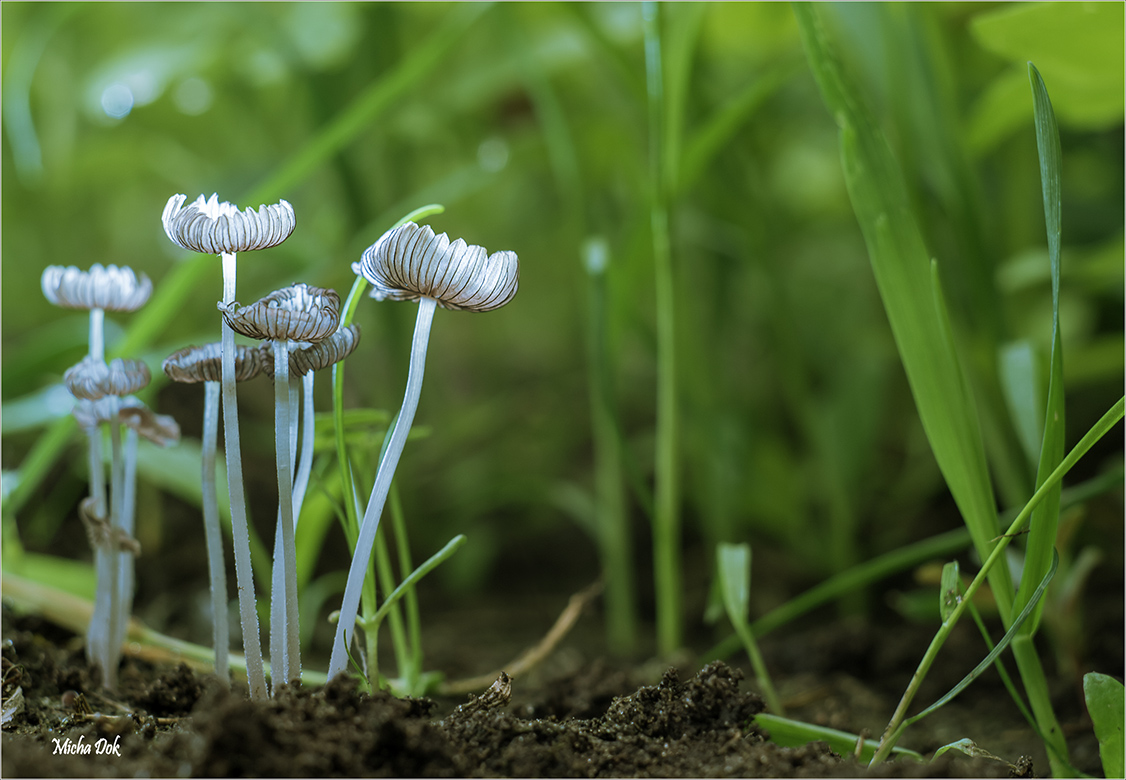How to recognize a white dung beetle - signs and habitats
This mushroom has probably been seen by everyone. You don't have to go to the forest for this. Dung beetles grow in large quantities even in cities. It happens that they even crawl out on flower beds. As their name suggests, they grow in well-fertilized soils. These can be compost heaps, decayed garbage dumps (organic), pastures for cattle and poultry, in the forest near rotten trees, in parks on decayed foliage. The first mushrooms appear at the beginning of summer and grow until autumn frosts.
The appearance of the mushroom is elongated and elongated with a bell-shaped cap. In height, it can reach fifteen centimeters. The leg is straight, hollow inside, has a thickening at the base. At the top it has a filmy ring. The cap is ovoid, with scales, a bell. The color is white, the cap has an ocher tint at the top. The mushroom does not become wormy.
How to correctly identify a dung beetle - see the video plot. The mushroom picker clearly shows where and how the mushroom grows and how edible it is:
Collection and application
There are several rules regarding the timing of harvesting koprinus and how to prepare them.
But it is important to take into account that dung beetles, like other representatives of the mushroom world, have both many useful properties and contraindications to use.
How to collect and distinguish from inedible mushrooms
In order to know when to collect the dung beetle, you need to familiarize yourself with its appearance at different stages of ripening. From the beginning of May to the end of October, the fruiting period lasts under suitable conditions.
Collection of dung beetles
At a young age, a small semicircular formation first appears, which resembles a white egg. The mushroom grows quickly enough and after 48 hours turns into a ball, which in shape resembles a bell with light fragile plates. In rare cases, the stem can grow up to 35 cm. The cap can open up to 10 cm in diameter. On a pile of manure, you can often see a tall koprinus with a dense hat and dark scales of light or gray color.
It is during this period that it is necessary to collect mushrooms while it has light, clean plates and the cap has not yet unfolded. In the following days, the hat unfolds and the plates turn pink. Thus, the coprinus shows that it is no longer possible to collect it. After that, the dung beet turns black and turns into ink.
Useful properties and restrictions to use
The beneficial properties of dung beetles are due to their high content:
- vitamins (C, B, D, E);
- essential amino acids, trace elements (iron, phosphorus, zinc, manganese, selenium, calcium, magnesium, copper);
- proteins, fats, as well as antioxidants.
First you need to chop the onion finely, and the mushrooms into slices. Fry the onions in sunflower oil until golden, and then add the mushrooms, salt and pepper. You need to fry for 15 minutes, put sour cream and simmer over low heat for 5 minutes.
The soup made from dung beetles is the same as from boletus. To prepare it, you will need: 300 g of mushrooms, 100 g of noodles, 3 potatoes, 2 carrots, 1 onion, 50 g of butter, sour cream, salt and black pepper to taste. First you need to pour 1 liter of water into a saucepan and put it on the stove. When the water boils, add the mushrooms.
White dung beetle (Coprinus comatus)
Gray dung
Common, or gray dung beetle (Coprinopsis atramentaria) is popularly called dung beetle or ink mushroom gray.
A distinctive feature of this species is the presence of a gray or gray-brownish cap with darkening in the central part. The diameter of the cap of an adult mushroom does not exceed 10.5 cm. Young mushrooms have an egg-shaped cap, which with age acquires a wide bell-shaped shape with strongly cracking edges.The surface part is characterized by the presence of small, dark colored scales.
Thinned light pulp darkens quickly enough and has a sweetish taste in the complete absence of mushroom aroma. The lower part of the cap is represented by wide, often spaced white plates, which gradually darken and undergo autolysis with the release of black spore powder into the external environment.
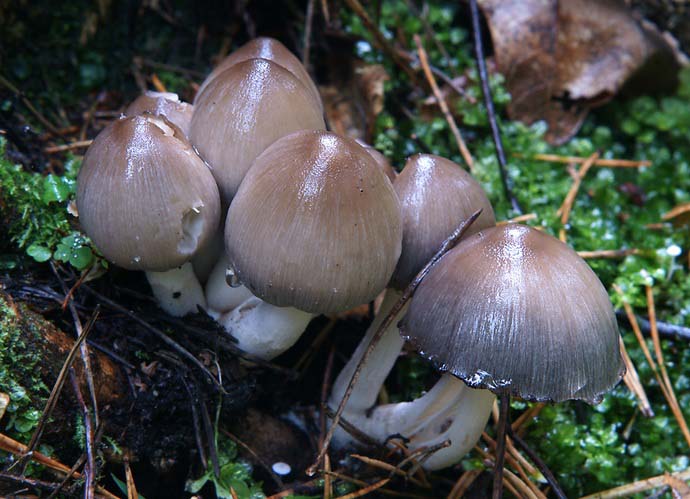
Edibility
White dung (shaggy or white ink) causes a lot of controversy, because in different regions they look at it differently. Today it is considered conditionally edible. For example, in Russia and Belarus, it is loved by mushroom pickers, in some Western countries it is considered poisonous and refuses to eat, and in the Czech Republic and Finland it is considered a delicacy.
Be that as it may, not a single examination has confirmed the presence of toxins dangerous for humans in the white dung beetle. In addition, the advantage of the mushroom is that it often grows in large groups. Therefore, going to the forest in season, it is unrealistic to return without a rich harvest. 
The crop should be processed within a maximum of 2 hours after harvest, since the autolysis reaction is not inhibited even in frozen food.
Given the moment that the white dung beetle prefers anthropogenic places, it is better not to collect them there, since the fruit body can absorb various toxic substances. 
Types and their description with photo
The two most popular edible species of coprinus are white and gray. Each of them has its own unique characteristics.
White
White dung (shaggy) grows in small bunches on well-fertilized soil, vegetable gardens, flower beds, dung heaps, areas saturated with humus. The hat is shaped like a cylinder, which soon resembles a brown bell. The villous plates are light, later turn pink.



In adulthood, the spores blur and stain the plates black. As a result, the bottom edge of the cap turns black. The leg is light, up to 15 cm in height and 2 cm in thickness. The pulp is soft with a characteristic mushroom smell.
At a young age, when the plates are light and clean, the mushroom is considered edible. As soon as the plates darken, the coprinus becomes unusable for food. You need to cook young fruits immediately after primary processing.
Gray
Gray dung is an edible (conditionally edible), but the most unloved mushroom in the villages of Russia, because it causes severe poisoning after drinking alcohol. It is popularly called "mother-in-law mushroom". Gray dung beetle settles on humus-flavored earth, on stumps and rotting leaves. It can often be found in city parks and squares.



Koprinuses grow instantly and do not live long. If in the evening they just started to come out of the soil, then by morning nothing remains of them. In comparison with white dung beetle, gray can exist for 2 days, after which it spreads into a black substance.
The hat reaches 10 cm in diameter, ovoid, which later turns into a bell, ribbed edges. The color is light, brown and darker in the center. The surface of the cap has scales. The pulp is white, without a pronounced odor, but sweetish in taste.
 Dung beetle gray
Dung beetle gray
The leg reaches a height of 20 cm and a diameter of 2 cm. You can find the mushroom along forest roads and around tree stumps with a lot of foliage. It grows in numerous groups. Fruiting from early April until late autumn.
Types and their description with photo
The two most popular edible species of coprinus are white and gray. Each of them has its own unique characteristics.
White
White dung (shaggy) grows in small bunches on well-fertilized soil, vegetable gardens, flower beds, dung heaps, areas saturated with humus. The hat is shaped like a cylinder, which soon resembles a brown bell. The villous plates are light, later turn pink.

In adulthood, the spores blur and stain the plates black. As a result, the bottom edge of the cap turns black. The leg is light, up to 15 cm in height and 2 cm in thickness.The pulp is soft with a characteristic mushroom smell.
At a young age, when the plates are light and clean, the mushroom is considered edible. As soon as the plates darken, the coprinus becomes unusable for food. You need to cook young fruits immediately after primary processing.
Gray
Gray dung is an edible (conditionally edible), but the most unloved mushroom in the villages of Russia, because it causes severe poisoning after drinking alcohol. It is popularly called "mother-in-law mushroom". Gray dung beetle settles on humus-flavored earth, on stumps and rotting leaves. It can often be found in city parks and squares.


Koprinuses grow instantly and do not live long. If in the evening they just started to come out of the soil, then by morning nothing remains of them. In comparison with white dung beetle, gray can exist for 2 days, after which it spreads into a black substance.
The hat reaches 10 cm in diameter, ovoid, which later turns into a bell, ribbed edges. The color is light, brown and darker in the center. The surface of the cap has scales. The pulp is white, without a pronounced odor, but sweetish in taste.
Dung beetle gray
The leg reaches a height of 20 cm and a diameter of 2 cm. You can find the mushroom along forest roads and around tree stumps with a lot of foliage. It grows in numerous groups. Fruiting from early April until late autumn.
Koprinus species
White dung beetle (Coprinus comatus)
The mushroom is 5–15 cm high. The cap is white, covered with scales. Because of this, the white dung beetle is also called shaggy. The shape of the cap is fusiform at a young age. Later, it unfolds in the form of a bell.
The lower plates are thin white, darkening with age. The leg is thin, smooth, hollow, up to 10 cm high.
White dung beetle is widespread. It grows from spring to autumn in the forest, in the fields, in kitchen gardens, orchards and along the roads.
White dung beetle is edible and tastes good. Mushrooms are harvested at a young age and processed quickly. Cut white dung beetles are not stored for a long time.
Gray dung beetle (Coprinopsis atramentaria)
A mushroom with a gray or grayish-brownish cap. The hat is covered with dark scales. The shape is ovoid at a young age, then opens in the form of a bell with cracked edges. The stem is white, hollow, darkish at the base, 1–2.5 cm in diameter.
The lower plates are wide, white, darkening with age. It is found almost everywhere from April to November. It prefers to grow in damp places, gardens, fields, compost heaps and decaying wood debris. Most often it grows in groups.
Belongs to the category of conditionally edible mushrooms. Before use, the gray dung beetle must be boiled. The taste of the mushroom is sweetish, there is no smell.
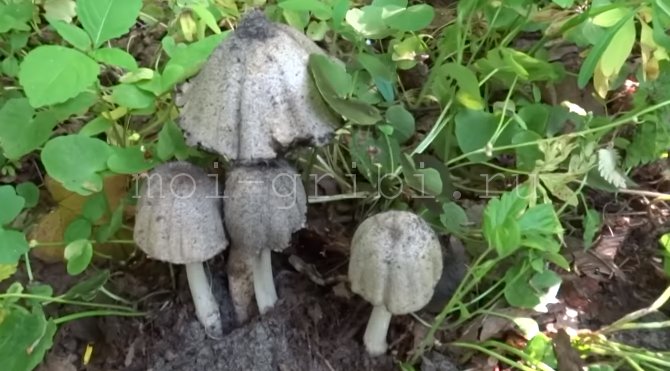
Shimmering manure (Coprinellus micaceus)
A mushroom with a bell-shaped or egg-shaped cap. The cap itself is 2–4 cm in diameter, furrowed, grayish-brown, more dark at the apex, covered with small shiny scales. The stem is thin, fibrous, hollow, fragile. The lower plates are thin, adherent, white, darkening with age.
It is found almost everywhere. It grows in groups or intergrowths from May to November on decaying wood, as well as in parks, gardens, pastures, etc.
An inedible mushroom, although it is also not considered poisonous.
Willow dung (Coprinellus truncorum)
A mushroom with an ovoid whitish cap. The grooves on the cap are more pronounced than those of the shimmering dung beetle. The edge of the cap is uneven, split. The leg is long, thin, smooth, white, hollow inside. The lower plates are thin, wide, light, darken and turn brown with age.
The fungus is widespread. It grows from spring to autumn almost everywhere.
Willow dung beetle is not considered poisonous, but it is not eaten.
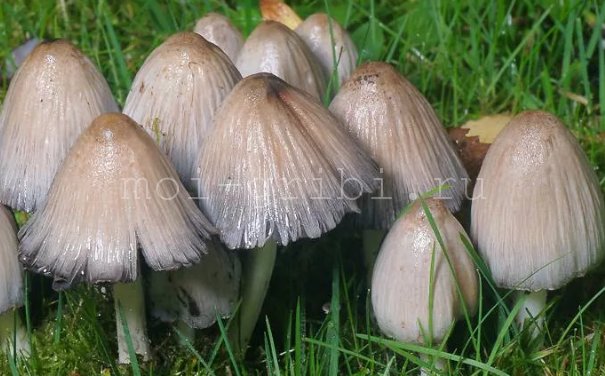
Dung beetle (Coprinopsis picacea)
A mushroom with an elongated large egg-shaped cap covered with white scales. The cap opens with age, taking on the shape of a bell. The leg is light, thin, hollow, up to 20 cm in height, about 2 cm in diameter, has a slight plaque.The lower plates are light.
Grows singly or in groups on decaying organic materials.
The resinous dung has an unpleasant odor and is not eaten.
Folded manure (Parasola plicatilis)
A mushroom with a yellowish closed cap 1–3 cm in diameter, which brightens and opens with age. The surface of the cap is folded. The leg is 5–10 cm in height, thin, smooth, light, fragile. The lower plates are grayish, thin, attached.
Distributed almost everywhere.
The folded dung beetle has a very short life span - about a day. The fragile leg cannot withstand the weight of the cap, and the mushroom breaks and dies.
It is not considered poisonous, but it is not eaten.
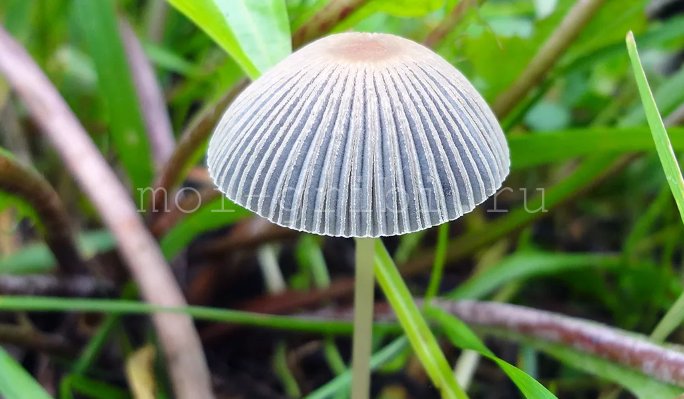
White dung
The well-known white dung beetle mushroom (Coprinus comatus) has a cap up to 9.5 cm in diameter. In young specimens, its shape is elongated and ovoid, eventually becoming narrow-bell-shaped. Coloration of the cap surface can be white, grayish or brownish. A feature is the presence on the apical part of a fairly wide brownish tubercle-ledge. The surface of the cap is densely covered with fibrous scales.
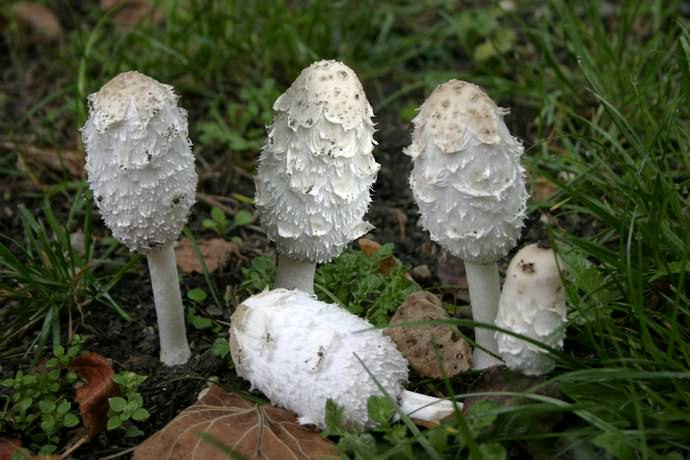
The white and rather soft pulp of the mushroom does not have a pronounced taste and aroma. The plates are of a free and wide type, very often located. Their coloration at a young age is pronounced white. In older specimens, the plates turn pink. Characterized by a blackening of the cap with the release of numerous spores at the stage of the outgrowth of the fungus.
The leg is located in the central part. Its height can vary within 10-35 cm, the average diameter is 1-2 cm. The peculiarity is the cylindrical shape, the presence of a cavity inside and a white surface with a clearly visible silky sheen. There may also be a pronounced bulbous thickening and a delicate, filmy-like white ring.
Reproduction
A distinctive feature of all coprinus is their unique way of reproduction. Due to the fact that the lower plates of the fungus, where the spores are contained, are very closely adjacent to each other, the coprinus cannot easily disperse them in the wind.
And then it turns on a special mechanism called autolysis. The fungus produces special enzymes that begin to actively digest the mushroom cap. That is, the mushroom actually eats itself.
As a result of this process, spores are released, and the cap turns into a viscous black liquid that flows from the stem and spreads over the surface of the earth.
An amazing way of self-sacrifice on the part of parents for the sake of procreation of their own kind!
Romagnesi
Appearance. The hat is in the shape of an umbrella with slightly rounded edges. Diameter 3-6 cm. The skin is beige, however, due to the presence of a huge number of dark scales, the overall color is gray with shades of yellow. The pulp is practically absent, since most of the cap is made up of plates. A thin layer of pulp is colored white. The leg is 6-10 cm long, dense, of medium thickness. Surface - dirty gray, hollow inside, fragile. The plates are loose, frequent, white in young fruiting bodies, and black in mature ones.
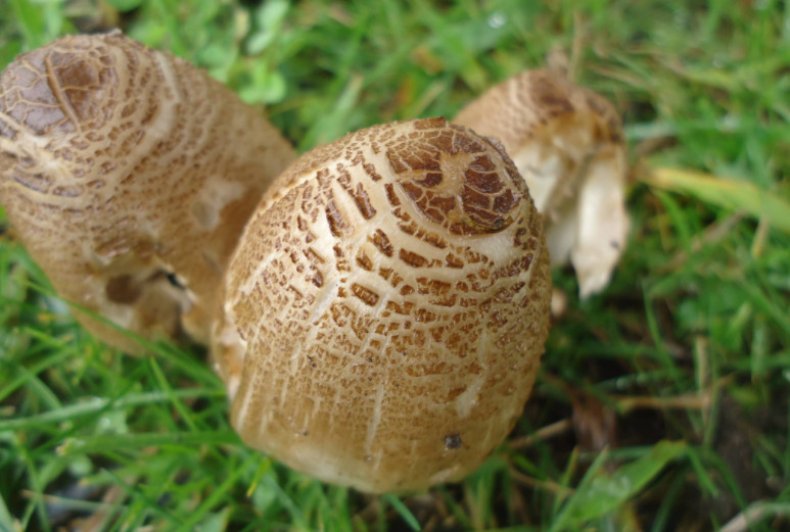 Coprinopsis romagnesiana
Coprinopsis romagnesiana
Where it grows. It grows on decaying wood, therefore it is found both in forests and in parks and in personal plots. Prefers a cool climate. Grows in small groups.
Seasonality and edibility. Mushrooms appear in the spring and then in the fall. In summer, the mycelium bears fruit only in the northern regions. The Romagnesi is considered a conditionally edible species, but only at a young age. Mushrooms with blackened plates are prohibited.
Find out which mushrooms grow in May.
Dung mushroom from alcoholism
Gray dung beetle and shimmering dung beetle can cause serious negative reactions when consumed in conjunction with alcohol.
Mushrooms contain a substance called coprin, which, when combined with alcohol, can cause dizziness, nausea, fever, and abdominal pain.
This feature was noticed by pharmaceutical companies, and began to use coprin (both natural and synthesized) for the production of drugs that help in the treatment of alcohol addiction. For the same purpose, dung mushrooms are also used in alternative medicine.
It is believed that daily consumption of small doses of coprinus causes a persistent aversion to alcohol in the patient.
For the same purpose, dung beetles are also used in alternative medicine. It is believed that daily consumption of small doses of coprinus causes a persistent aversion to alcohol in the patient.
But it is better to consult a doctor!

Beneficial features
Reviews of the nutritional value and taste of these conditionally edible mushrooms are very mixed. Only young specimens that do not have darkened plates are subject to consumption.
It should be remembered that dung beetle dishes are incompatible with alcoholic beverages and can cause severe enough poisoning. This feature made it possible to use the mushroom as a folk remedy for getting rid of alcoholism. Dung beetle has found quite widespread use as a very powerful natural remedy for combating alcoholism.
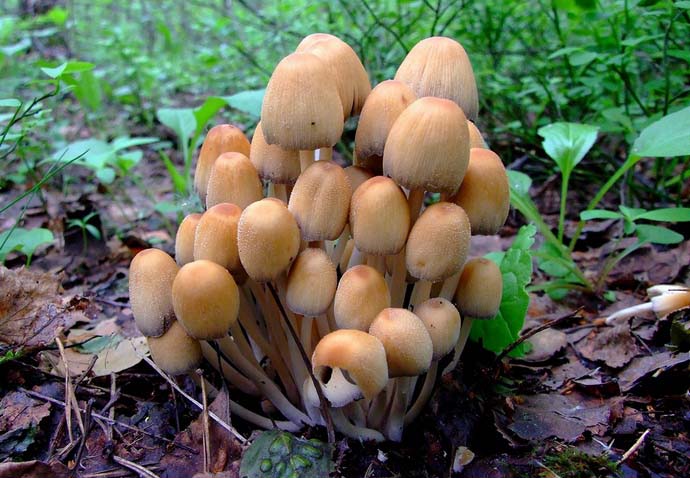
It is quite simple to properly prepare a remedy for alcohol dependence on your own:
- the peeled and washed mushroom pulp should be finely chopped and then placed in a large and shallow frying pan;
- over low heat, the mushrooms should be fried, stirring constantly, until the water completely evaporates;
- the resulting fried mushroom mass must be dried very well, and then grind with a coffee grinder to a powdery state.
The resulting mushroom powder keeps very well. It should be added to food or drink for persons prone to uncontrolled excessive alcohol consumption. After such a meal, the following symptoms may occur, which after a while pass on their own and do not require medical intervention:
- redness or purity of the face;
- the appearance of bright purple spots on most of the body;
- blanching of the tip of the nose and earlobes;
- increased heart rate and pulse;
- the appearance of intense heat;
- the emergence of feelings of anxiety and fear;
- nausea and vomiting;
- impaired vision and speech.
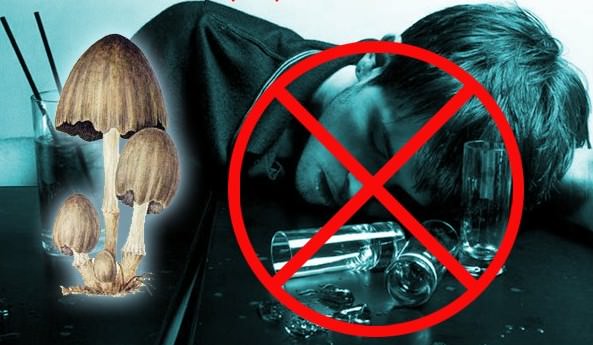
For people who do not drink, dung beetles are absolutely harmless, and unpleasant sensations do not arise when using them.
What can be confused with
The white dung beetle has no dangerous counterparts with which they can be confused. However, this does not mean at all that you can lose your guard.
Beginners who want to collect these mushrooms should be extremely careful in choosing their prey and follow certain safety rules so as not to fall prey to eating mushrooms.
If you have never tried white dung beetle, considering it an inedible mushroom, be sure to try it. Its unusual taste and tenderness of the pulp will not leave you indifferent. And our advice will help you not to be mistaken on a "quiet hunt".
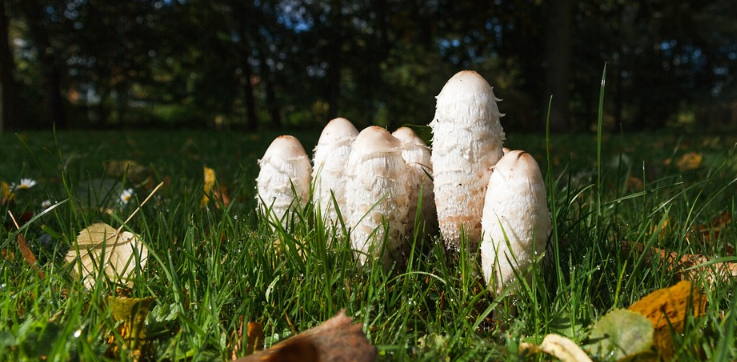
Koprinus! Remember this beautiful Latin word!
The phrase: "Today for dinner a roast with koprinus" sounds much better than its very loose translation from Latin: "I fried a frying pan of dung beetles."
For people with a developed sense of beauty, this sounds harsh. But, in fact, everything is correct.
The genus of these mushrooms, indeed, is called dung mushrooms. And some of them are edible and delicious.
How to cook?
Coprinuses have a very mild, delicate flavor, so they are best used in simple recipes.
Mushrooms are fried, stewed and used to make soups.
There are many recipes for great dishes with these mushrooms.
Here is one of them.
Omelet with dung mushrooms and cheese
Ingredients:
Preparation:
- Peel the mushrooms, wash and cut into thin slices.
- Melt butter in a skillet over medium heat.
- Fry the mushroom pieces with finely chopped onion until golden brown.
- Beat eggs with milk, add salt and pour the mixture into a pan with mushrooms. Fry for 10 minutes.
- Sprinkle with grated cheese after cooking.
 A fairly common mushroom in Russia, the dung beetle, or coprinus (from the Latin Coprinus), from the Champignon family (Agaricaceae) grows on fertile substrates that are rich in nutrients, including manure, humus, humus, rotting wood and plant debris.
A fairly common mushroom in Russia, the dung beetle, or coprinus (from the Latin Coprinus), from the Champignon family (Agaricaceae) grows on fertile substrates that are rich in nutrients, including manure, humus, humus, rotting wood and plant debris.
A significant part of the species is classified as inedible. However, there are edible dung beetles worthy of attention of mushroom pickers, among which gray and white are of particular interest.
Dung beetle White or Ink Coprinus Comatus
Common mushroom dung with a tasteless name
The only truly edible mushroom of its kind. It has excellent taste and is highly appreciated by true connoisseurs. Also known as Ink Mushroom.
Appearance
The hat is up to 15 cm high and up to 10 cm in diameter, initially spindle-shaped, then bell-shaped. Has a white or grayish color that darkens over time, and is covered with very characteristic wavy "goofs". A dark tubercle is often visible in the center of the cap.
The hymenophore is lamellar, the plates are wide, very frequent and free, initially white, then turning pink, darkening, and self-destructing along with the cap. Spore powder, black.
Approximately two days after hatching from the soil, the cap begins to leak a dark liquid, blackens and dries up until all turns into ink.
The leg is long, up to 35 cm high and up to 2 cm in diameter, hollow and cylindrical, centrally located. The leg is white, with a silky shade, and a slight thickening is visible at the base. A fragile white film ring remains on the top of the leg, which often falls off as the fungus grows, and if it does not have time to fall off, it darkens strongly from the "ink" dripping from above.
The pulp is soft and white, with a slight pleasant taste and smell.
Where and when it grows
White dung beetle is widespread throughout the northern temperate zone, found everywhere where there are loose, well-fertilized soils - in fields, orchards, vegetable gardens, in cities near garbage dumps and garbage dumps, on dung heaps and along roads. Can get caught in general in the most unexpected places. It is often found simultaneously in colossal quantities. Fruiting from May to late autumn.
Culinary application
Not all collectors are aware of the wonderful taste of this mushroom. Due to its small size, characteristic appearance and habit of growing anywhere, including in the most unappetizing places, many take it for a kind of toadstool. However, those who are familiar with the taste of White Dung bean appreciate it extraordinarily. According to experts, this mushroom is especially good fried with an omelet or sour cream. In France, Czech Republic and Finland Dung is generally revered as a delicacy.
When eating White Dung for food, you need to follow some rules:
- Fruiting bodies can be harvested only at a very young age, until the hymenophore plates begin to darken - about two days after the mushroom emerges from the ground. There is evidence of the successful use of Dungs in food and with an already fairly darkened hat - but you should not experiment with this once again.
- The decomposition process continues in already cut mushrooms, therefore, they must be started to process no later than 2 hours after collection. According to available information, the process of "inking" continues to occur even in frozen copies.
- It is recommended to boil the dung for 15 to 20 minutes before use. Those who like to cook this mushroom immediately in its raw form are desperately arguing with this, claiming that boiling only reduces the taste of the mushroom. Whether this is so or not, and who, in this case, is right is still unknown.
- It is not recommended to mix dung beetles in the same dish with other mushrooms.
- It is believed that Dungs accumulate with particular zeal in themselves various toxic substances, so they are not advised to collect them along major highways, industrial enterprises and other sources of environmental problems.
- The evidence of the toxicity of this mushroom when interacting with alcohol has not been confirmed, so dung beetle does not help from drunkenness. However, this should not serve as a reason for abuse either.
For special purposes
This type of Navoznikov has long had one more use. The ink produced by the self-decomposition of the cap was used to draw up especially important government documents. It was believed that the inscriptions made with this ink could not be counterfeited, because if you look at the document through a microscope, then in the frozen ink, the spores of the fungus will be clearly distinguishable, making up a unique pattern that could be fixed, and it was impossible to deliberately repeat.
White dung beetle (Coprinus comatus)
Other names for the mushroom: Ink mushroom
or
Ink mushroom
Dung beetle (Latin Coprinus comatus) is a mushroom of the genus Dung (Latin Coprinus) of the Dung family.
Hat: Height 5-12 cm, shaggy, white, first spindle-shaped, then bell-shaped, practically does not straighten. There is usually a darker bump in the center of the cap, which, like the captain, is the last to disappear when the cap of the mushroom comes out on the ink. The smell and taste are pleasant. Frequent, free, white, turn pink with age, then turn black and turn into "ink", which is characteristic of almost all dung beetles.
Spore Powder: Black.
Leg: Length up to 15 cm, thickness 1-2 cm, white, hollow, fibrous, relatively thin, with a white movable ring (not always clearly visible).
Distribution: White dung is found from May to autumn, sometimes in enchanting quantities, in fields, vegetable gardens, orchards, lawns, in garbage dumps, dumps, dung heaps, as well as along roads. Occasionally comes across in the forest.
Similar species: White dung (Coprinus comatus) is almost impossible to confuse with anything.
Edible: Excellent mushroom. However, it should be remembered that you can only pick mushrooms that have not yet begun to fulfill their Great Mission - to self-digest, to turn into ink. The plates must be white. True, nowhere is it said what will happen if you eat (eat, as they say in special editions) dung beetle, which has already started the process of autolysis. However, there are hardly any who wish. It is believed that white dung is edible only at a young age, before the staining of the plates begins, no later than two days after it emerged from the soil. It is necessary to process it no later than 1-2 hours after collection, since the autolysis reaction continues even in frozen mushrooms. It is recommended to pre-boil it as conditionally edible, although there are claims that the mushroom is edible even in its raw form. It is also not recommended to mix dung beetles with other mushrooms.
It should also be noted that according to scientific data, garbage saprophytes like dung beetles with special enthusiasm pull all kinds of harmful products of human activity from the soil. Consequently, it is impossible to collect dung beetles in the city, as well as near highways.
By the way, it was previously believed that Coprinus comatus contains substances incompatible with alcohol, and therefore, in a sense, poisonous (although, for that matter, alcohol itself is poisonous, not the mushroom). Now it is quite obvious that this is not the case, although sometimes this old delusion pops up in the literature. Many other dung beetles like Gray (Coprinus atramentarius) or Shimmering (Coprinus micaceus) are advocating a healthy lifestyle, although this is not certain. But the White Dung, fortunately or unfortunately, is deprived of this property. That's for sure.
Notes: I have many childhood memories associated with the dung beetle. In the second class, in the fall, I somehow unexpectedly became a big enthusiast of "city mushrooms", spending whole days in search of dung beetles and champignons. I knew all the yards in my neighborhood, I had a lot of volunteers. They laughed at me, of course, but for some reason they willingly helped.
At home my inclinations were fully supported. Oddly enough, in terms of mushrooms, they completely trusted me even then, and every autumn for several years in a row dung beetles and, less often, champignons appeared on our table.Dung beetles stewed in sour cream, and cheese on top - it's impossible to forget. How I began to collect them and why I stopped - I definitely don't remember, but dung beetles in sour cream ...
Mushroom photo Dung beetle white from questions in recognition:
The dung beetle mushroom has probably been seen by everyone. Outwardly, it looks unattractive - a thin leg and a blackening cap immediately evoke thoughts of its inedibility. But this is fundamentally wrong! This type of mushroom is edible, and in some national cuisines it is even considered a delicacy!
The peculiarity of the dung beetle or koprinus is that it ages very quickly. In just a few hours, a snow-white mushroom turns into an unsightly dark blot
Therefore, it is very important to find and collect it in time.
Before answering the question whether this mushroom is edible or not, it is worth understanding that there are a couple of dozen species of coprinus in nature. And some species are more or less poisonous. Consider those types of dung fungus that are common in our latitudes and can be used in cooking or traditional medicine.
History of the genus Coprinus
Caprinus, or Koprinus (Latin Coprinus) is a genus of mushrooms belonging to the mushroom or agaric family (Agaricaceae).
The history of this kind resembles the history of the old ones. aristocratic families. "My family was once noble, but now dilapidated ..." - this can be said about the genus of dung beetles. Rather, not as dilapidated as noticeably thinner.
At the end of the twentieth century, it included about five dozen species of mushrooms. But after the geneticists intervened, some of the fungi were excluded from the Coprinus genus and redistributed into the Coprinellus, Coprinopsis and Parasola genera.
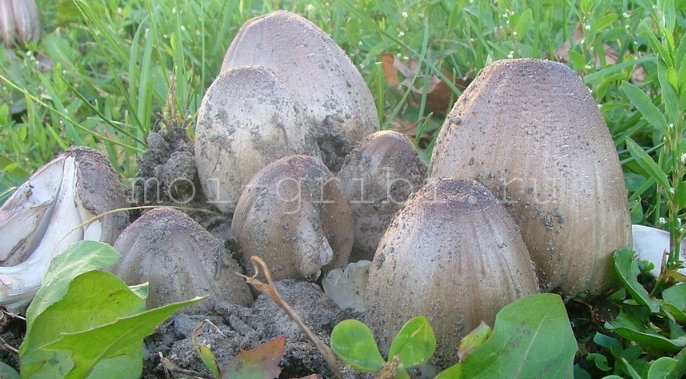
This process has not yet been completed. Therefore, it is difficult to name the exact number of fungi belonging to the genus Coprinus. Russian and British Wikipedia, and now, as they say, are confused in the testimony. According to the first version, it includes fourteen types of mushrooms, according to the second - eighteen.
Only one thing can be said with certainty - the world of mushrooms is complex, mysterious and has not yet been fully explored.
This article will focus on dung beetles, which are definitely assigned to the genus Coprinus.

